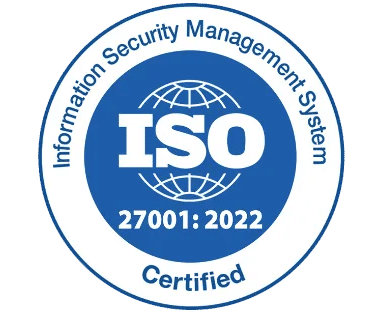How IT Helpdesk Support Remote Work Environments?

Remote operations have become more than a trend—they’re now a fundamental aspect of how businesses function. While this shift offers numerous advantages, it also presents unique challenges, particularly in IT support.
Without a robust helpdesk system like Helpdesk 365, organizations may struggle with inefficiencies, security vulnerabilities, and diminished employee satisfaction.
The Critical Role of IT Help desk in Remote Work
The shift to remote work has revolutionized the modern workplace and offered employees flexibility while enabling businesses to tap into global talent. However, this transition is not without its challenges.
The absence of a physical office environment means that employees rely heavily on technology to stay connected, productive, and secure. This is where IT helpdesk plays a crucial role.
A helpdesk serves as the backbone of technical support in remote work settings, ensuring that employees receive timely assistance when they encounter hardware, software, or network-related issues.
More than just a troubleshooting solution, a helpdesk enhances efficiency, strengthens cybersecurity, reduces downtime, and improves employee satisfaction.
Without IT, organizations may struggle with communication breakdowns, prolonged disruptions, and security vulnerabilities.
Why IT Helpdesk Are Essential for Remote Work
Rapid Issue Resolution and Minimal Downtime
In a traditional office, IT support is just a few steps away. Employees can walk to the IT department and get immediate help. In remote work environments, delays in resolving technical issues may significantly impact productivity.
- 24/7 remote support to troubleshoot issues instantly.
- Automated ticketing systems that prioritize urgent problems and assign them to the right experts.
- Live chat, email, and phone support to ensure employees have multiple ways to seek assistance.
Without a helpdesk, employees may spend hours trying to fix technical issues themselves or waiting for sporadic IT responses, causing frustration and lost productivity.
Improved Communication and Collaboration
One of the biggest challenges of remote work is maintaining clear communication across distributed teams. Employees working across different time zones or using various software tools require a centralized platform to report issues and receive updates.
- Seamless communication between IT teams and employees.
- A knowledge base with FAQs, troubleshooting guides, and self-help resources.
- Real-time status updates on ongoing technical issues, preventing miscommunication.
Without a structured helpdesk, employees may resort to scattered emails and informal chat messages, resulting in miscommunication, lost requests, and unresolved issues.
Strengthening Cybersecurity in Remote Work
Remote work environments expose businesses to increased security threats, including phishing attacks, data breaches, and unauthorized access. Employees often use personal devices and public networks, making them vulnerable to cyber risks.
- Enforcing security policies such as VPN usage and multi-factor authentication.
- Monitoring for cybersecurity threats and providing real-time alerts.
- Assisting with software updates and security patches to protect against vulnerabilities.
Without a helpdesk, businesses may struggle to enforce security protocols, increasing the risk of cyberattacks that can compromise sensitive company data.
Consistency and Standardization of IT helpdesk Support Service
When remote employees encounter technical issues, they need consistent and reliable support. If they receive different solutions from different IT personnel, it can lead to confusion and frustration.
- Ensures uniformity in IT support responses.
- Tracks all reported issues to identify recurring problems and improve solutions.
- Provides structured workflows for issue resolution, reducing inefficiencies.
Without a dedicated helpdesk system, IT support can become inconsistent, leaving employees unsure of where to turn for reliable assistance.
Enhancing Employee Experience and Retention
A smooth IT experience directly impacts employee satisfaction and retention. Frustration caused by unresolved IT issues can lead to decreased motivation and disengagement.
- Create a supportive work environment where employees feel valued.
- Provide personalized assistance tailored to an employee’s role and tech needs.
- Offer self-service options so employees can resolve minor issues quickly.
Without a helpdesk, employees may feel unsupported, leading to lower morale and potential turnover, which can be costly for businesses.
The Consequences of Not Implementing Helpdesk 365
Helpdesk 365 is designed to address the specific challenges of remote IT support. Without its implementation, organizations may face:
- Increased Downtime: Technical issues take longer to resolve, leading to significant productivity losses.
- Employee Frustration: Persistent technical problems and inconsistent support can lead to frustration, reducing job satisfaction and potentially increasing turnover rates.
- Data Security Risks: Without centralized oversight, enforcing security protocols becomes challenging, leaving the organization vulnerable to cyber threats.
- Operational Inefficiencies: The absence of streamlined processes can lead to duplicated efforts, miscommunication, and wasted resources.
Conclusion
The shift to remote work necessitates a re-evaluation of how organizations provide IT support. Implementing a robust SharePoint helpdesk system like Helpdesk 365 is not just a technical upgrade but a strategic move to enhance productivity, ensure security, and maintain employee satisfaction.
By addressing the unique challenges of remote work, helpdesk organizations thrive in this new environment.
Experience the difference a dedicated helpdesk can make. Consider exploring Microsoft Helpdesk 365 to streamline your remote IT support and keep your team connected, secure, and productive.
Frequently Asked Questions
1. What is IT Helpdesk Support?
IT Helpdesk Support is a service that provides technical assistance to employees, customers, or end-users who experience issues with IT systems, software, or hardware. It serves as the first point of contact for troubleshooting technical problems, answering IT-related questions, and ensuring smooth operations within an organization.
2. Why is a helpdesk software essential for remote work?
Remote employees often face technical challenges, connectivity issues, and security threats. A helpdesk ensures timely resolution, minimizes downtime, and enhances productivity.
3. How does a helpdesk software improve remote team collaboration?
It provides structured communication channels, organizes support tickets, and ensures quick access to troubleshooting resources, preventing miscommunication.
4. Can a helpdesk help prevent cybersecurity risks for remote workers?
Yes, IT service helpdesk implement security protocols, provide updates on potential threats, and help enforce best practices like VPN usage and multi-factor authentication.
5. What happens if a company doesn’t have helpdesk for remote employees?
Without helpdesk software, employees may experience unresolved technical issues, security vulnerabilities, lost productivity, and frustration due to inconsistent support.
6. Are IT helpdesk services only for large companies?
No, businesses of all sizes benefit from IT helpdesk services. Small and medium-sized companies can streamline remote IT support and improve efficiency.
7. Can a helpdesk support multiple time zones for remote teams?
Yes, many help desks operate 24/7 or offer automated solutions to ensure global remote teams receive timely assistance regardless of location.
8. How does a helpdesk handle software and hardware issues for remote employees?
Helpdesks provide step-by-step troubleshooting, remote access support, and guidance on software installations, updates, and hardware connectivity problems.
9. How can a company set up an effective helpdesk for remote work?
Organizations should choose a helpdesk solution with multi-channel support, ticketing automation, security measures, and real-time monitoring to optimize remote IT support.










_svxLrd-8yH.png)

_2VYSFUTN5m.png)

_JiluXJRGNl.svg)

_2djTKNocf.png)





_Rapo0hRMBy.png)










